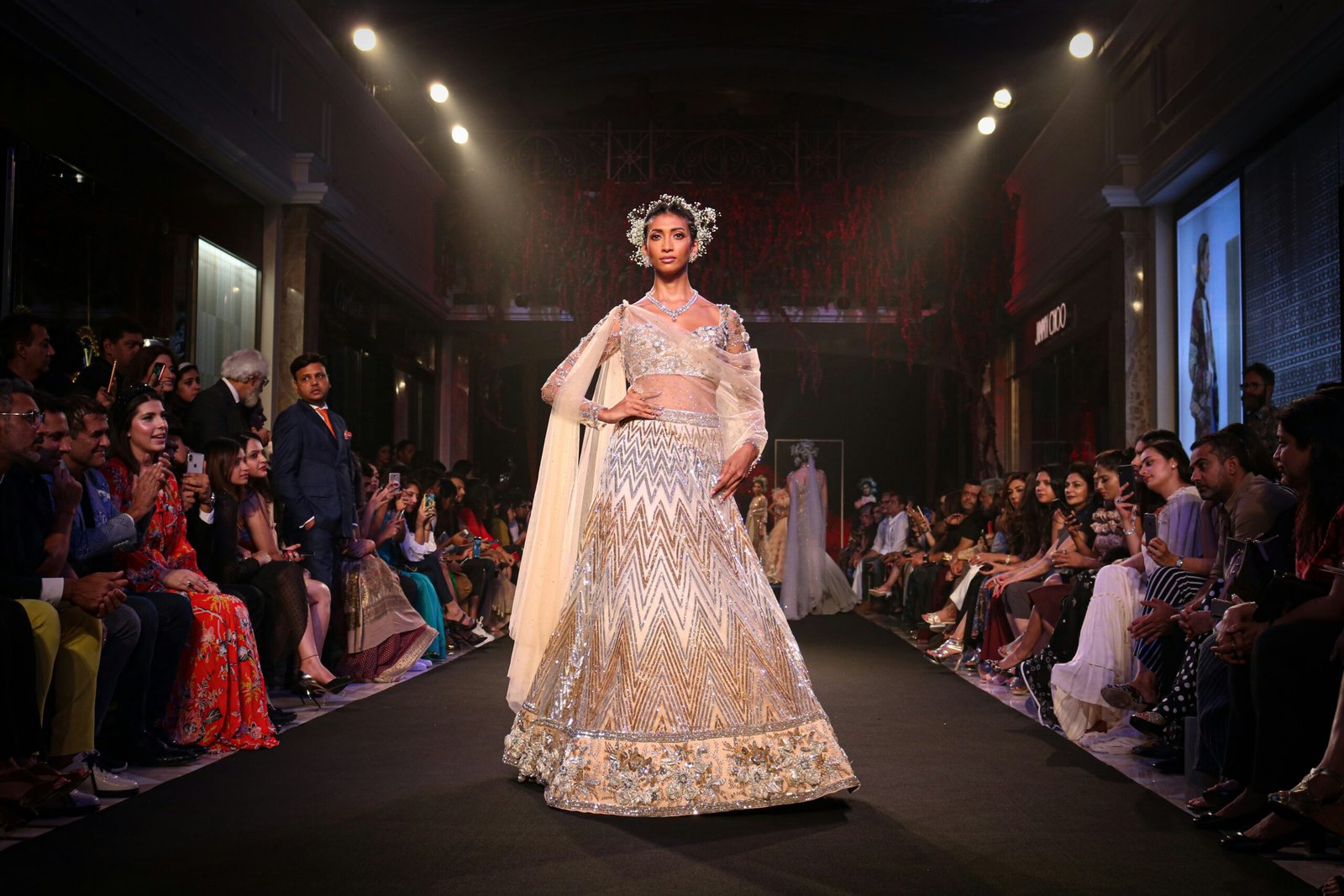
Introduction
Welcome to our latest blog post, where we dive into the world of fashion and explore the trendsetting styles that have been spotted on the runway. Fashion shows are not only a platform for designers to showcase their creativity, but they also set the tone for upcoming fashion trends. In this article, we will take a closer look at some of the most captivating and influential styles that have graced the catwalks, leaving a lasting impression on the fashion industry. So, let’s jump right into the world of model mania!
As fashion enthusiasts eagerly anticipate the unveiling of new collections each season, fashion shows serve as a spectacle of creativity and innovation. These events bring together renowned designers, models, stylists, and industry professionals to present their latest creations to a global audience. The runway becomes a stage where fashion dreams are brought to life, and the audience is transported into a world where imagination meets reality.
One of the most intriguing aspects of fashion shows is the ability of designers to push boundaries and challenge traditional norms. Each collection is a reflection of the designer’s unique vision, often inspired by a myriad of influences such as art, culture, history, and even current events. From avant-garde creations that defy conventional notions of beauty to minimalist designs that exude elegance and sophistication, fashion shows offer a diverse range of styles that cater to every taste and preference.
Furthermore, fashion shows not only showcase the garments themselves but also the artistry and craftsmanship behind them. From intricate hand-sewn details to innovative fabric manipulation techniques, designers demonstrate their mastery of the craft through their meticulous attention to detail. The runway becomes a canvas where fabrics and textures are transformed into wearable works of art, captivating the audience and leaving them in awe of the designer’s skill and creativity.
Moreover, fashion shows have a significant impact on the industry as a whole. The styles and trends that emerge from these events often dictate what will be popular in the coming seasons. Fashion editors, buyers, and influencers closely observe the runway presentations, analyzing every detail and predicting which designs will resonate with consumers. This influence extends beyond the runway, as fashion houses and high street retailers look to these trends to guide their own collections and satisfy the demands of their customers.
In conclusion, fashion shows are much more than glamorous events; they are a reflection of the ever-evolving world of fashion and its influence on society. From the striking runway presentations to the intricate designs, these shows provide a glimpse into the creative minds of designers and the future of fashion. So, fasten your seatbelts and get ready to embark on a journey through the world of model mania, where style and innovation collide!
But the power of runway fashion extends far beyond the glitz and glamour of the shows themselves. It infiltrates every aspect of the fashion industry, from the designers and models to the buyers and consumers. Runway fashion has the ability to influence not only what we wear, but also how we perceive ourselves and the world around us.
One of the ways in which runway fashion exerts its power is through the creation of trends. When a designer presents a collection on the runway, they are not just showcasing their own artistic vision, but also predicting what will be popular in the future. Fashion editors and buyers carefully observe these shows, taking note of the colors, silhouettes, and fabrics that are being showcased. They then use this information to inform their own buying decisions, selecting pieces that they believe will resonate with consumers.
Once these trends hit the stores, they have the potential to shape the way we dress and express ourselves. When we see a trend being embraced by designers, celebrities, and influencers, it becomes a part of our cultural zeitgeist. It becomes a symbol of what is “in” and what is “out,” and can influence our own personal style choices. Whether we consciously or subconsciously follow these trends, they have a way of infiltrating our wardrobes and ultimately shaping our identities.
But the power of runway fashion goes beyond just influencing our personal style. It also has the ability to challenge societal norms and push the boundaries of what is considered acceptable. Designers often use the runway as a platform to make political and social statements, using fashion as a means of expression. Whether it’s a collection inspired by a particular culture or a statement about body positivity, runway fashion has the power to spark conversations and provoke thought.
Furthermore, the power of runway fashion extends to the economic impact it has on the industry. Fashion weeks around the world attract buyers, journalists, and influencers from all corners of the globe. These events generate significant revenue for the cities that host them, as well as for the designers and brands that participate. The exposure that designers receive from showcasing their collections on the runway can lead to increased sales and brand recognition, propelling their careers and businesses forward.
In conclusion, the power of runway fashion cannot be underestimated. It has the ability to shape trends, influence personal style, challenge societal norms, and drive economic growth. The runway is not just a spectacle, but a platform for creativity, innovation, and self-expression. It is a space where fashion comes to life and has the power to captivate and inspire.
Avant-garde fashion is not limited to clothing alone; it extends to accessories and even hairstyles. Designers often collaborate with hairstylists and makeup artists to create looks that complement their avant-garde designs. Elaborate hairstyles, unconventional makeup, and even facial prosthetics are used to enhance the overall vision of the collection.
One of the reasons avant-garde fashion is so captivating is because it challenges societal norms and expectations. It encourages individuals to think outside the box and embrace their own unique style. Avant-garde designs celebrate individuality and self-expression, giving people the freedom to experiment and break free from the constraints of traditional fashion.
While avant-garde fashion may seem inaccessible to some, it has a significant influence on mainstream fashion. Elements of avant-garde designs often trickle down into ready-to-wear collections, inspiring designers and consumers alike. The bold use of color, innovative fabric manipulation techniques, and unconventional silhouettes can be seen in more wearable pieces found in stores.
Avant-garde fashion also serves as a platform for social commentary. Designers often use their collections to explore and address important issues such as gender, politics, and the environment. Through their designs, they challenge societal norms and provoke conversations about these topics. Avant-garde fashion becomes a powerful medium for expressing and raising awareness about pressing matters.
Overall, avant-garde fashion is a testament to the limitless possibilities of creativity. It encourages us to question and redefine what is considered fashionable, pushing the boundaries of what is deemed acceptable. Whether it’s on the runway or in everyday life, avant-garde styles inspire us to break free from the norm and embrace our own unique sense of style.
The impact of this shift towards diversity on the runway goes beyond just the fashion industry. It has the potential to shape societal perceptions of beauty and redefine the standards that have been ingrained in our culture for so long.
By showcasing models of different sizes, heights, and backgrounds, designers are not only challenging the traditional beauty standards but also encouraging individuals to embrace their own uniqueness. This newfound representation allows people to feel seen and validated, regardless of whether they fit into the traditional mold of beauty or not.
Moreover, the inclusion of diverse models in runway shows helps to break down the barriers that have long existed in the fashion industry. It sends a message to aspiring models that they too can pursue a career in fashion, regardless of their size, ethnicity, or gender. This opens up opportunities for individuals who have historically been excluded from the industry, fostering a more inclusive and representative environment.
Furthermore, the impact of embracing diversity on the runway extends beyond the fashion industry itself. It has the power to influence societal perceptions of beauty and challenge the narrow standards that have been perpetuated by the media for decades. When individuals see a variety of body types, ethnicities, and genders represented on the runway, it helps to normalize and celebrate diversity in all its forms.
This shift towards inclusivity is not without its challenges, however. The fashion industry still has a long way to go in terms of fully embracing diversity. While progress has been made, there is still a need for greater representation and inclusivity across the board. Designers and brands must continue to push boundaries and challenge the status quo to ensure that diversity becomes the norm rather than the exception.
In conclusion, the fashion industry’s move towards embracing diversity on the runway is a step in the right direction. It challenges traditional beauty standards, empowers individuals, and has the potential to shape societal perceptions of beauty. By celebrating and embracing diversity, the industry can foster a more inclusive and representative environment that reflects the diversity of the real world.
Reviving retro styles is not just a trend in the fashion industry, but also a reflection of our society’s fascination with the past. In a world that is constantly changing and evolving, there is a certain allure to looking back and embracing the styles of previous decades.
One reason why retro styles have made a comeback is the cyclical nature of fashion. Trends that were once popular often resurface years later, as designers find ways to reinterpret and update them. This cyclical nature allows for a constant reinvention of styles, ensuring that fashion never becomes stagnant or repetitive.
Another reason for the popularity of retro styles is the desire for individuality and uniqueness. In a world where fast fashion dominates, many individuals are seeking ways to stand out and express their personal style. Retro styles offer a way to do just that, as they often deviate from the mainstream and offer a sense of nostalgia that is hard to replicate.
Furthermore, retro styles have a certain timelessness to them. While they may be inspired by specific eras, they often transcend time and can be worn by individuals of all ages. This versatility is what makes retro styles so appealing, as they can be incorporated into a variety of different looks and can be dressed up or down depending on the occasion.
Reviving retro styles also allows for a celebration of fashion history. By paying homage to the fashion icons of the past, designers are able to honor their contributions to the industry and showcase their influence on contemporary fashion. This not only educates the audience about the rich history of fashion but also fosters a sense of appreciation for the craftsmanship and creativity that goes into creating timeless designs.
Overall, the revival of retro styles in the fashion industry is a testament to the enduring power of fashion and its ability to transcend time. By infusing these styles with a modern twist, designers are able to create a bridge between the past and the present, offering fashion enthusiasts a chance to embrace nostalgia while still staying relevant in today’s ever-changing world.


